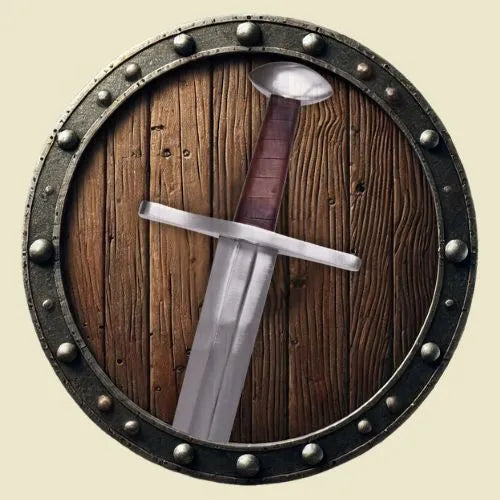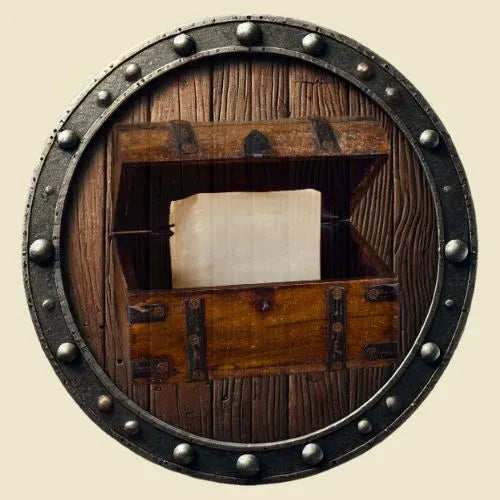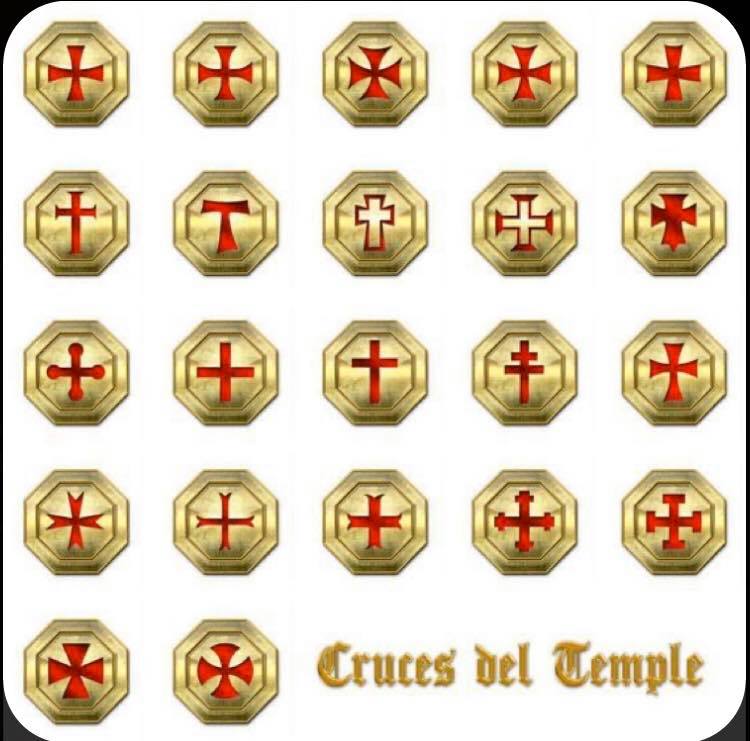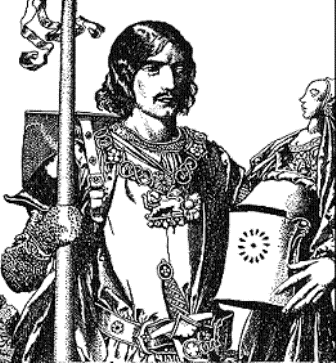The history of the Knights Templar is shrouded in mystery, courage, and spirituality.
These warrior monks not only left a profound mark on the Middle Ages, but also created recognizable symbols: the Templar crosses. Over time, various types of these crosses emerged, each with its own symbolic meaning.
Below, we'll explore who the Knights Templar were and describe 11 types of Templar crosses, highlighting their differences, meanings, and historical uses.

Who were the Knights Templar?
The Knights Templar, officially known as the Order of the Poor Companions of Christ and of the Temple of Solomon, was a Christian military order founded in 1119, whose initial mission was to protect Christian pilgrims on their way to Jerusalem after the First Crusade.
Over time, the Templars accumulated great wealth, political influence, and military power, becoming one of the most feared and respected orders of their time.
They wore a white cloak with a red cross, a symbol of their faith and commitment to fight in the name of God. The Templar cross became one of the most iconic emblems of the Middle Ages.
Over time, these Knights Templar adopted numerous crosses with different shapes, each with a different meaning.
Types of Templar Crosses
These are 11 of the main types of Templar Crosses, along with their meanings.
Cross Pate

It is the best known, a cross with arms that flare out at the ends and end in a curved shape. It represents sacrifice and spiritual victory.
Cross Kick

Also known as the Spanish Templar Cross, it is similar to the Pate Cross but with wider and shorter arms. It symbolizes divine protection in battle.
Cross of the Eight Beatitudes

Also called the Maltese Cross or Celtic Cross. An eight-pointed cross, with a symmetrical design, represents the eight blessings of the Sermon on the Mount and the struggle between good and evil . Widely used by Christian military orders.
Calatrava Cross

Cross with Florentine arms (ending in a fleur-de-lis). Although its use is more associated with the Order of Calatrava, its design derives from Templar inspiration.
Templar Red Cross

The most traditional cross for the Templars, simple, red, and with straight arms. It represented the blood shed by Christ.
Jerusalem Cross

Composed of a large cross and four smaller crosses at its corners, it represents the expansion of Christianity to the four cardinal points.
Tau Cross

Shaped like a "T," it was a symbol of salvation and rebirth. At times, it was also associated with the Templar movement.
Modified Ankh Cross (Templar Ankh Cross)

Although the Ankh is Egyptian, some Templar variants adapted its design as a symbol of eternal life in Christ.
Byzantine Cross

Of oriental influence, with equal arms, it shows spiritual openness and the union of East and West.
Latin Cross

It corresponds to the design used in the churches of Latin Christianity, which is why it was used as a symbol of devotion and faith in Christianity.
Patriarchal Cross

A cross with two horizontal lines, the central one being longer. It was a symbol of hierarchy within the Order and was worn on the left arm.
Variations and varieties of the Templar Crosses
It is worth mentioning that these are not the only crosses used by the Templars, and just as some are variations of others, there are also a large number of variations on those mentioned.

Meanings and Uses of Crosses
Each Templar cross was more than an ornament: it had a purpose and meaning, whether spiritual or military. They were worn on mantles, shields, and banners, or were found on the Order's official documents.
While the simple Red Cross was worn in battle as a protective amulet, the Pate Cross was used on important documents as a seal of authenticity. Furthermore, crosses like the Eight Beatitudes symbolized the inner spiritual commitment each knight was expected to maintain.
The variety also reflected the cultural influences received as the Order spread across different territories.
Furthermore, each Templar cross served as a reminder of the oath that the Knights Templar took: poverty, chastity, and obedience, united under the sword and faith.
The selection of a particular cross was not accidental; it was related to specific functions within the Order or to specific territories where the Templars operated.
The Knights Templar were much more than medieval warriors: they were monks, architects, bankers, and custodians of powerful symbols. The various Templar crosses not only adorned banners and robes, but also conveyed profound spiritual values, beliefs, and missions.
Each cross told a story: of faith, sacrifice, religious expansion, and honor. To explore them is to delve into a fascinating chapter of medieval history that continues to inspire generations.
Today, Templar crosses survive not only in museums or history books; they remain emblems of courage, spiritual commitment, and mystery, reflecting the spiritual and military legacy of the Order of the Temple, as well as its deep connection to the history and symbolism of medieval Europe.
Don't forget to check out our store , where you'll find a variety of medieval items, including Templar tunics and more.





